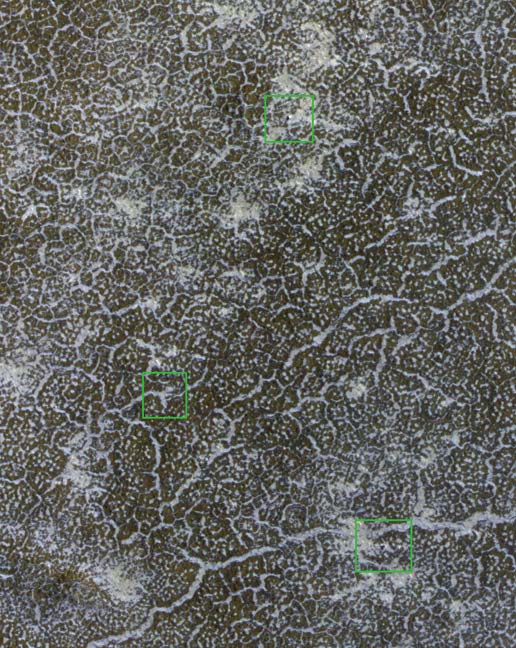No Signs of Life Yet From Silent Mars Lander

This story was updated on Jan. 22.
The first attempts tolisten for beeps of life from NASA?s long-frozen Phoenix Mars Lander have foundonly silence, though scientists aren?t holding their breath.
NASA?s Mars Odysseyspacecraft fle over Phoenix?s landing site in the Martian arctic 30 timesthis week in the off chance that the spacecraft is still able to send a signalback to Earth. The campaign began Monday and lasted three days, but so far Phoenixremains silent.
NASA spokesperson GuyWebster at the agency?s Jet Propulsion Laboratory (JPL) in Pasadena, Calif.,said that after the first few days of listening for any signal from Phoenix,Odyssey did not hear a single peep. The agency is now preparing for morechances in February and March to listen for the probe.
?It?s not a ?Hey, are youthere??? Webster told SPACE.com of the effort. ?It?s just listening.?
Phoenix has been dormantsince November 2008, when it completed a nearly five-monthmission to dig for buried water ice near the Martian north pole. The harshcold of winter on Mars, as well as the season?s dwindling levels of sunlight,sent Phoenix into a deep freeze, mission managers have said.
It is extremely unlikelythat Phoenix?s systems survived the cold, long Martian winter, but engineersequipped the probe to try to call Earth just in case it wakes up. Phoenixis programmed with a so-called ?Lazarus mode? that would reboot the spacecraftonce its power-generating solar arrays have collected enough sunlight.
Get the Space.com Newsletter
Breaking space news, the latest updates on rocket launches, skywatching events and more!
With winter now turning tospring on Mars, NASA is waiting to see if enough of Phoenix?s systems survivedto allow it to phone home. The $475 million lander?s systems were not designedto withstand the severe cold of Martian winter.
Recent images of the landertaken by NASA?s Mars Reconnaissance Orbiter have showed the probe blanketedin frost on an arctic plain dotted with patches of carbon dioxide ice andbare ground.
Webster told SPACE.com thatthis week?s campaign won?t be the last of NASA?s efforts to revive Phoenix.
Longer listening campaignsare planned in February and March, when the sun will have climbed higher in theMartian sky above Phoenix?s landing site. For those efforts, Odyssey willactually transmit radio signals that could be picked up by Phoenix if it hasrevived.
Phoenix landed on Mars onMay 25, 2008 and began a planned three-month mission to search for buried Martianwater ice and study the planet?s surface and polar weather. The probeconfirmed the presence of water ice just beneath the surface and lasted twomonths longer than expected.
But despite Phoenix?s accomplishments,NASA cannot listen for the probe indefinitely. Scientists have had to tradeaway observation time on Odyssey in order to dedicate the orbiter to scan forPhoenix signals.
?It?s not a freebie,?Webster said. ?There is some science that?s not being performed.?
- Odds Slim for Resurrecting Defunct Mars Lander
- SPECIAL REPORT: Highlights of the Phoenix Mars Lander Mission
- Images: Phoenix on Mars
Join our Space Forums to keep talking space on the latest missions, night sky and more! And if you have a news tip, correction or comment, let us know at: community@space.com.

Tariq is the Editor-in-Chief of Space.com and joined the team in 2001, first as an intern and staff writer, and later as an editor. He covers human spaceflight, exploration and space science, as well as skywatching and entertainment. He became Space.com's Managing Editor in 2009 and Editor-in-Chief in 2019. Before joining Space.com, Tariq was a staff reporter for The Los Angeles Times covering education and city beats in La Habra, Fullerton and Huntington Beach. In October 2022, Tariq received the Harry Kolcum Award for excellence in space reporting from the National Space Club Florida Committee. He is also an Eagle Scout (yes, he has the Space Exploration merit badge) and went to Space Camp four times as a kid and a fifth time as an adult. He has journalism degrees from the University of Southern California and New York University. You can find Tariq at Space.com and as the co-host to the This Week In Space podcast with space historian Rod Pyle on the TWiT network. To see his latest project, you can follow Tariq on Twitter @tariqjmalik.









